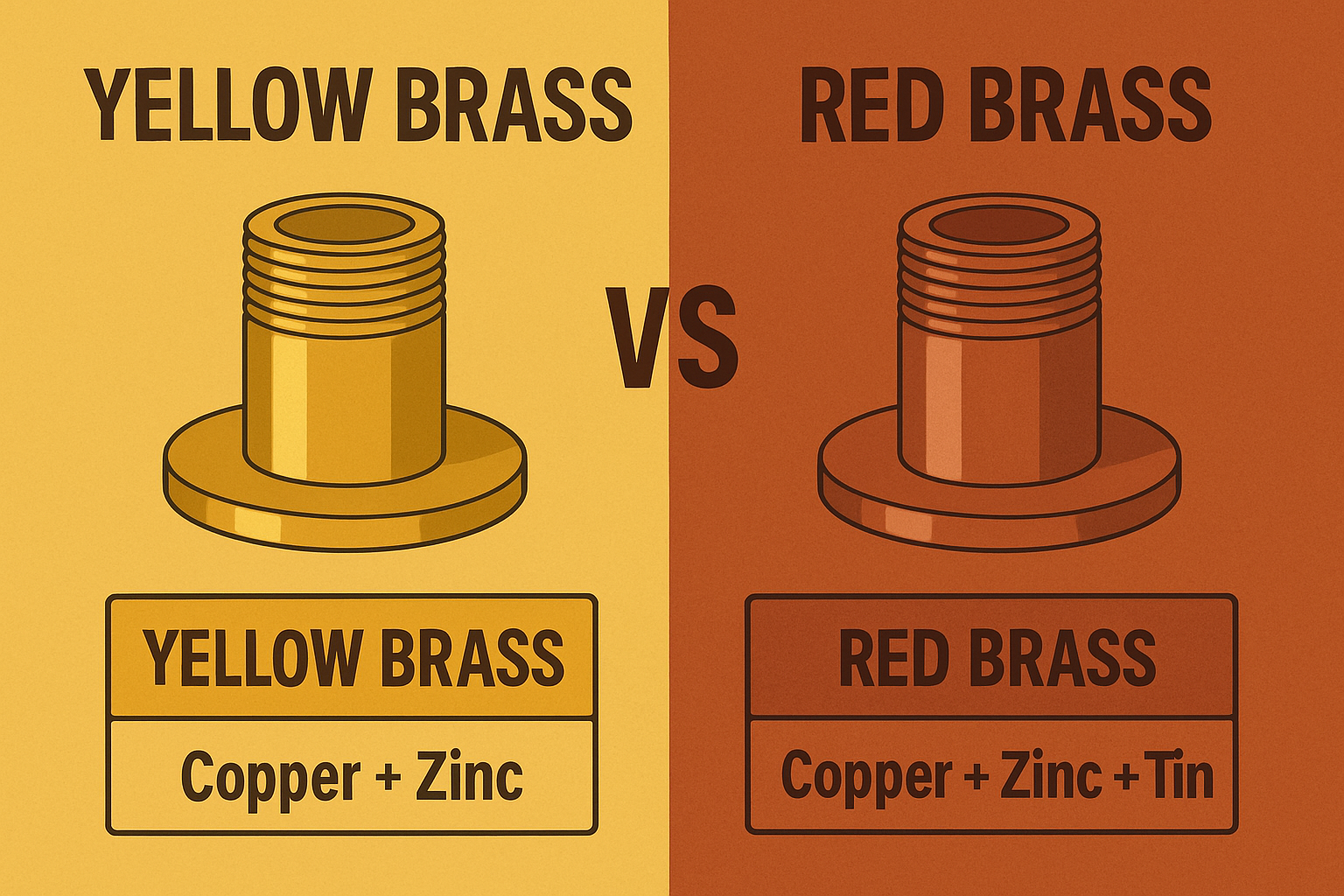When it comes to selling scrap brass, most people are surprised to learn that not all brass is created equal. Two of the most common forms of brass you’ll encounter in Australia are Yellow Brass and Red Brass. While they may look similar at first glance, the differences in their composition, properties, and scrap values are significant.
At Premier Metals in Perth, we deal with both types of brass on a daily basis, and knowing the difference can make a real impact on how much you earn when selling scrap.
This comprehensive guide will explain everything you need to know about yellow brass and red brass, from their characteristics to pricing trends in 2025.
Contact Premier Metals today to sell your scrap metals at the best price at 08 6252 8500
Brass is one of the most commonly recycled non-ferrous metals in Australia, valued for its copper content, durability, and wide applications in plumbing, electrical, and decorative industries. However, brass is not a pure metal — it’s an alloy primarily made of copper and zinc, sometimes with other elements like lead or tin.

The proportion of copper to zinc (and other trace elements) determines whether it’s classified as yellow brass or red brass. Because copper is the most valuable component, the higher the copper content, the higher the scrap value.
Here’s a breakdown of how yellow brass and red brass differ in structure and use:
| Feature | Yellow Brass | Red Brass |
| Composition | 60–70% copper, 30–40% zinc, small amounts of lead | ~85% copper, ~15% zinc, with traces of tin & lead |
| Colour | Bright gold or yellowish | Reddish-brown due to high copper content |
| Hardness & Strength | Softer, easier to machine | Stronger, more durable |
| Corrosion Resistance | Good, but less resistant to dezincification | Excellent, higher resistance due to copper |
| Common Uses | Plumbing fittings, faucets, electrical connectors, decorative hardware | Valves, heavy-duty fittings, marine applications, plumbing fixtures |
| Value in Scrap | Lower due to less copper | Higher due to more copper |
Key takeaway: Red brass is generally more valuable than yellow brass because of its higher copper percentage.
Because brass prices are linked to global copper and zinc markets, both red and yellow brass can fluctuate significantly. That’s why, at Premier Metals, we always recommend checking with us for up-to-date prices.
Here’s a general comparison for 2025:
| Type of Brass | Average Scrap Price (AUD/kg) | Notes |
| Yellow Brass | $5.00 – $6.00 per kg | Widely available, common in household plumbing |
| Red Brass | $6.50 – $7.50 per kg | Higher copper content makes it more valuable |
⚠️ Disclaimer: These prices are subject to change based on market conditions and regional variations. For the latest rates, contact Premier Metals in Perth directly.
If you’re not sure which type of brass you have, here are some practical methods to tell them apart:
Red brass is slightly heavier and denser than yellow brass.
Professional yards sometimes use grinding to identify alloys by spark patterns. Yellow brass typically gives off a brighter spark.
The main reason is copper content. Red brass contains around 85% copper, compared to 60–70% in yellow brass. Since copper is one of the most in-demand scrap metals, higher copper equals higher payout.
Industries like plumbing, marine engineering, and heavy construction prefer red brass for its durability and corrosion resistance. That industrial demand helps keep its price stronger compared to yellow brass.
At Premier Metals, our process ensures brass scrap is sorted, graded, and recycled efficiently:
By sorting your scrap beforehand, you can often secure a higher payout.
Recycling brass saves energy and resources compared to mining new copper and zinc. It reduces the carbon footprint of industries like plumbing, manufacturing, and construction. Plus, brass can be recycled indefinitely without losing quality, making it a true circular economy metal.
At Premier Metals, we take pride in supporting Perth’s sustainability efforts while offering competitive returns to our customers.
Red brass has a much higher copper content (~85%), making it more valuable than yellow brass (~60–70% copper). Since copper prices are strong globally, this boosts red brass’s scrap value.
Yes, but it’s not recommended. If you mix yellow and red brass together, most scrap yards (including Premier Metals) will price it at the lower grade to avoid misclassification.
Remove attachments like screws, steel fittings, or rubber seals, and sort brass by type. Clean and separated brass typically fetches better prices.
You can bring your brass directly to Premier Metals in Perth. We offer top prices for both red and yellow brass, along with other scrap metals like copper, aluminium, lead, and vehicle scrap.